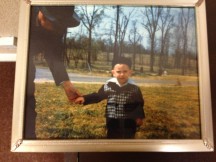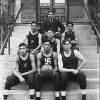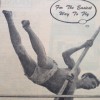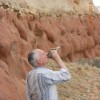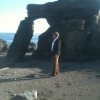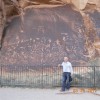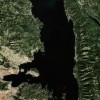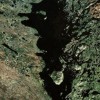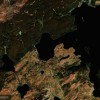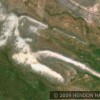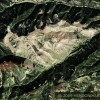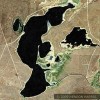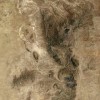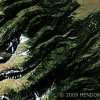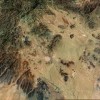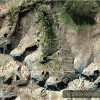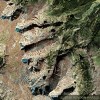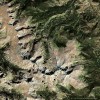
Buddhist Symbols, Customs and Monuments in Pre- Columbian North America by Hendon Harris III
Posted on Tuesday, November 26th, 2013
“chinesediscoveramerica.com”
” Navajo Basketball with Swastika (Manji) 1909″Â
Although evidence of ancient Buddhism in the Americas may be “The Easiest Way” to prove Asian contact and cultural influences it by no means serves as the benchmark for the beginning of Asian influences here. Ancient Chinese classical literature has numerous references to a beautiful country called Fu Sang on the opposite side of the Eastern Sea. These references begin in the Shan Hai Jing (Book of the Mountains and Rivers) 2000 BCE and ends with the Liang Shu which details the Buddhist missionary trip of Hwui Shan and four other Buddhist monks from Gandhara (now Pakistan/Afghanistan) to Fu Sang. Recently reported finds of the carved names of at least two Shang Dynasty Emperors have been found in a New Mexico petroglyph park by a group led by Dr. John Ruskamp. His book “Asiatic Echoes” details this find. My sister, Charlotte Harris Rees, has written a book on what many believe was one of the ancient Shan Hai Jing expedition routes in North America. Her book is titled “Did Ancient Chinese Explore America.” The reason I have chosen this particular topic of ancient Buddhism to demonstrate early Asian contact and influences here is because of the abundant amount of evidence to support it.
The story of Buddhism in ancient America begins with the Liang Shu accounting of Hwui Shan’s report to the Chinese Emperor and courtiers in 503 CE. Although Hwui Shan left on his missionary trip in 458 and returned to China in 499 it took him several years to obtain an audience with the emperor for his report to be entered into the official Chinese record. (It must be noted that “Hwui Shan” was not his given name. His real name is unknown.) Hwui Shan is a name given to him by the Chinese court. Its literal meaning is “Very Intelligent” This is the name by which he will probably be known for all time.
A translation of this Chinese report was introduced to the western world by French historian Joseph de Guignes in 1761 and was widely accepted as detailing a trip from China to the Americas for the next 75 years. After that a group of German sinologists, engaged in a rivalry with their French counterparts, worked diligently to discredit de Guignes’ theory.
POWERFUL EVIDENCE OF ANCIENT BUDDHISM HERE ARE THE BUDDHIST CUSTOMS, SYMBOLS AND MONUMENTS THAT EXIST TO THIS DAY.
Customs:
1) The Seven Step Seven Vow Wedding
2) Use of Parasols as Symbols of Authority
- The most common wedding ceremony used by Native Americans throughout the United States is “The Seven Step Seven Vow Wedding” This ceremony has been celebrated here for hundreds of years as their own tradition around “the sacred fire”. However, this identical ceremony also celebrated clockwise around the same “sacred fire” is still celebrated in India as the “Saptahpadi”. This wedding originated in India thousands of years ago. The only places it is known to be practiced today are India and North America.
- Native American chiefs use the Parasol (One of the Eight Auspicious Symbols of Buddhism) as a sign of their power and authority just as was used by kings and gurus in ancient India. For evidence of this I refer you to the August 8, 1883 meeting between President Chester Arthur and the Shoshoni and Arapaho tribal chiefs and elders at Fort Washakie, Wyoming. Pictures were taken of the event. The inferior photo can be accessed by googling: “Indian Reception of President Chester A Arthur”. This picture from behind enables visitors to see the umbrellas without an explanation. A recent painting of the event can be accessed at “Indians with Umbrellas”. The best view is in the book “The Great Chiefs” in the Time-Life Book series “The Old West”. On page 144-145 is a picture of approximately 18 mounted Native Americans. Six of the men are holding umbrellas. A portion of the picture caption reads “The chiefs hold umbrellas to distinguish them from the ordinary warriors”. The nation where this custom originated is Vedic India where the parasol was also used to demonstrate power and authority.
Symbols:
           1) Ancient Buddha Tree of Life Lotus Flower
           2) Mandalas
           3) Mantras (Medicine Songs and Prayers)
           4) Manjis
           5) Buddhapada
- Google: “Ancient Buddha Tree of Life Lotus Flower” These two symbols which can only be seen from the sky are the Vajrayana (Tibetan) Buddhist Vajra on the left and an image of one of Vajrayana Buddhism’s Wrathful Deities, Yamantaka, on the right. This geoglyph is near Egnar, Colorado.
- It is well established and recognized that the Native American Medicine Wheels, Medicine Shields and Sand Paintings are in fact North American versions of the Vedic Mandala. Google: “Meaning of Mandalas/Native American Mandalas”
- In North America Vedic Mantras are called Medicine Songs as in Medicine Wheel or Medicine Shield. A Mantra is a prayer or a song. Google: “Native American Wedding Vows and American Indian Prayers” Go to: Ancient Sanskrit Poem.
- The Manji is most commonly known as a swastika. This symbol is a sacred Vedic India symbol used by all religions that originated in ancient India. It is acknowledged to be used by the Navajo and Hopi tribes. In Sanskrit the ancient language of India Manji is interpreted “whirlwind” So although mainstream scholars declare that there is absolutely no connection between these identical forms in India and the Four Corners you have to ask yourself why the Navajo call this shape “whirling logs” and the Hopi refer to it by the same name as it is in Sanskrit-“whirlwind”.
- Buddhapada (Buddha’s Footprints) Some scholars of ancient Buddhism have made “Buddhapada” their major area of study. They have reported that wherever ancient Buddhism was taught images of Buddha’s footprints were left behind carved into rocks or statues to commemorate that fact.
Google:”Buddhist Symbols Newspaper Rock”
Vedic/Buddhist Monuments
- An interesting so called “hoodoo” is found in Walpi Village in the middle of their ceremonial square. Most of the Hopi sacred rituals are conducted around this curiously shaped rock called “Snake Dancer’s Rock”. A similarly shaped rock is found in Thailand which has been positively linked to an ancient Buddhist culture ”Isan Home to Ancient Dvaravati Ruins”. For two more beautiful examples of this same symbol Google: “Bent Hoodoo by Ned” and “The Cobra Fisher Towers”.
- A “Persian Manticore” shaped rock formation in North America well known in 5th century India can be seen by Googling: “The King Arches National Park”
- Phallic Symbols- These are common in Vedic societes. Google “Phallic Symbols North America” and “Buck and Mabel’s King Kong Dong”
- “Mushroom Rocks National Park Kansas”. These oddly shaped “hoodoos” in Kansas look incredibly like mushrooms thus their name. The name of the Chattra (Parasol) in Sanskrit is literally interpreted “mushroom” because that is what the parasol shape looks like.
INCREDIBLE ARCHES, LAND BRIDGES AND ROCK WINDOWS FOUND THROUGHOUT THE FOUR CORNERS
- “Delicate Arch Utah” –Arches National Park. This stand alone rock formation is on the edge of a cliff. Delicate Arch is commonly thought to be the work of natural erosion. It’s the symbol of Utah on the license plates of Utah residents.
- “Anasazi Arch-Cox Canyon” New Mexico Anasazi Arch is very similar to Delicate Arch. Its also a free standing formation with apparent cuts near the bottom of each arch leg just like Delicate Arch. In ancient and modern Vedic religions the arch (Torana) is often used in temple architecture as a religious symbol. Google: “Torana Vedic Gateway Arch” “Inukshuk Barrenlands Northwest Territories” and “Pa Kung Temple Roi Et Thailand Images” for examples as well as “Arch in Delhi commemorates India- Mexico friendship” for an example of a currently acknowledged pre Columbian connection between India and Mexico.
-  “Rainbow Bridge, Arizona” on the banks of Lake Powell is a Navajo sacred site. It’s so sacred to them that they sued the U.S. government unsuccessfully to prevent tourists from going to the bridge and walking under the arch. Rainbow Bridge is one of the amazing “Tour of the Big 14” natural arches and bridges of the world. A point to be made about this top 14 is that all but #5 which is in the Sahara Desert (Chad) are in either China or the Four Corners Region of North America. The only other exception (#12) was recently located in Afghanistan (Gandhara) which was also a Buddhist culture and the starting point of Buddhist missionary Hwui Shan’s trip to Fu Sang in 458 CE.
- “Window Rock, Arizona” After learning about the veneration of these unusual rock formations by the tribes of the Four Corners does it surprise you that the Navajo tribe with the largest reservation in the United States has located their Capitol and Administrative Center at Window Rock with its inspiring “Hole in the Wall” window? Google: “Window Rock Navajo”
-  Petrified Wood: Buddhists and Native Americans revere petrified wood. Scores of huge petrified wood logs on raised sandstone platforms are found in the New Mexico wilderness, the Bisti Badlands. Google: “Bisti Badlands Petrified Wood Log Images” for pictures of this phenomenon. These raised platform images are much less frequent in the Petrified Forest National Park in northeastern Arizona but are there as well. Google:”Petrified Forest Map Lover” for an image there.
When a casual observer sees just one or two of these Vedic examples listed above it may appear random and unconnected. However, when you learn of these numerous customs, symbols and monuments of Vedic India showing up in the Four Corners area, ancient home of the Anasazi (Puebloan) people and now home to the Navajo and Hopi tribes, one recognizes patterns developing. These patterns taken together make it a statistical improbability that any other conclusion can be reached than that Vedic Asian Buddhists were in fact in ancient Pre-Columbian America and left numerous symbols, customs and monuments that remain here to this day as a cherished part of Native American culture and religion.
Dr. Stephen Lekson’s online essay “Diffusions and Histories/The Southwest in the World” explains why the path to scholarly acceptance of any theory based on diffusion (cultural and religious transfers ) has moved at a snail’s pace if at all.
Lets hope for a brighter tomorrow when scholars can look “outside the box” for their many questions about the history and religious past of the Native Americans of the Four Corners.
Internet Sources
“Were the Anasazi People Buddhists?”
“Mandalas, Mantras, Manji’s and Monuments”
“Dimensions of Dine (Navajo) and Buddhist Traditions”
“Hendon’s Geoglyphs”
Big Hendon and Little Hendon III
Â
The Beak of the Tenth Sun/Raven-STILL GLOWS.
![3458954346_19f4c064e0_o[1]](http://www.chinesediscoveramerica.com/wp-content/uploads/3458954346_19f4c064e0_o1.jpg)
